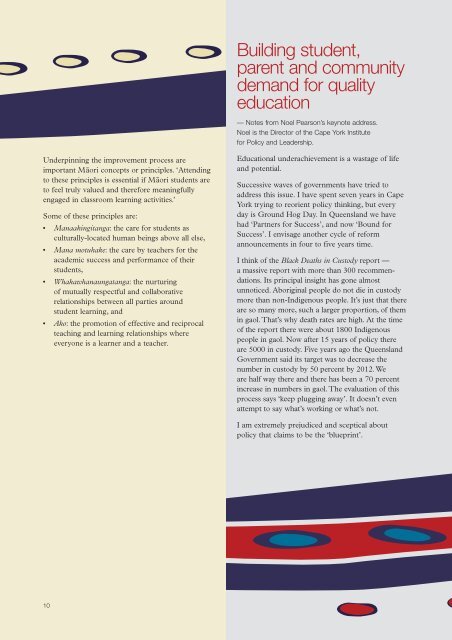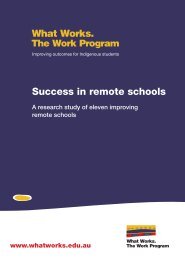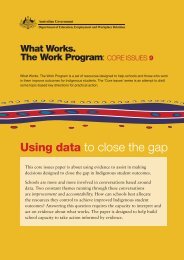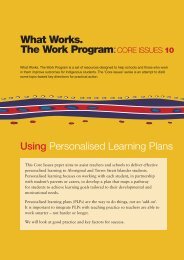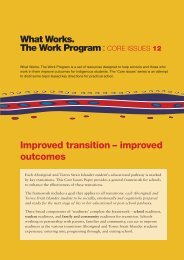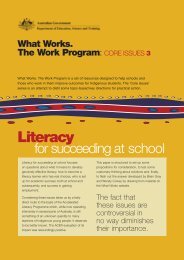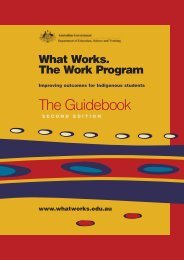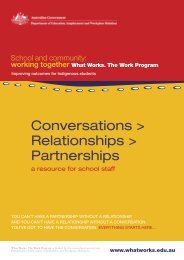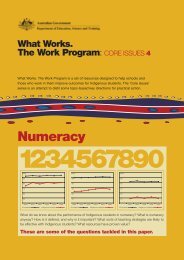Indigenous education: International perspectives - What Works
Indigenous education: International perspectives - What Works
Indigenous education: International perspectives - What Works
You also want an ePaper? Increase the reach of your titles
YUMPU automatically turns print PDFs into web optimized ePapers that Google loves.
Building student,<br />
parent and community<br />
demand for quality<br />
<strong>education</strong><br />
— Notes from Noel Pearson’s keynote address.<br />
Noel is the Director of the Cape York Institute<br />
for Policy and Leadership.<br />
Underpinning the improvement process are<br />
important Māori concepts or principles. ‘Attending<br />
to these principles is essential if Māori students are<br />
to feel truly valued and therefore meaningfully<br />
engaged in classroom learning activities.’<br />
Some of these principles are:<br />
• Manaakingitanga: the care for students as<br />
culturally-located human beings above all else,<br />
• Mana motuhake: the care by teachers for the<br />
academic success and performance of their<br />
students,<br />
• Whakawhanaungatanga: the nurturing<br />
of mutually respectful and collaborative<br />
relationships between all parties around<br />
student learning, and<br />
• Ako: the promotion of effective and reciprocal<br />
teaching and learning relationships where<br />
everyone is a learner and a teacher.<br />
Educational underachievement is a wastage of life<br />
and potential.<br />
Successive waves of governments have tried to<br />
address this issue. I have spent seven years in Cape<br />
York trying to reorient policy thinking, but every<br />
day is Ground Hog Day. In Queensland we have<br />
had ‘Partners for Success’, and now ‘Bound for<br />
Success’. I envisage another cycle of reform<br />
announcements in four to five years time.<br />
I think of the Black Deaths in Custody report —<br />
a massive report with more than 300 recommendations.<br />
Its principal insight has gone almost<br />
unnoticed. Aboriginal people do not die in custody<br />
more than non-<strong>Indigenous</strong> people. It’s just that there<br />
are so many more, such a larger proportion, of them<br />
in gaol. That’s why death rates are high. At the time<br />
of the report there were about 1800 <strong>Indigenous</strong><br />
people in gaol. Now after 15 years of policy there<br />
are 5000 in custody. Five years ago the Queensland<br />
Government said its target was to decrease the<br />
number in custody by 50 percent by 2012.We<br />
are half way there and there has been a 70 percent<br />
increase in numbers in gaol. The evaluation of this<br />
process says ‘keep plugging away’. It doesn’t even<br />
attempt to say what’s working or what’s not.<br />
I am extremely prejudiced and sceptical about<br />
policy that claims to be the ‘blueprint’.<br />
10


